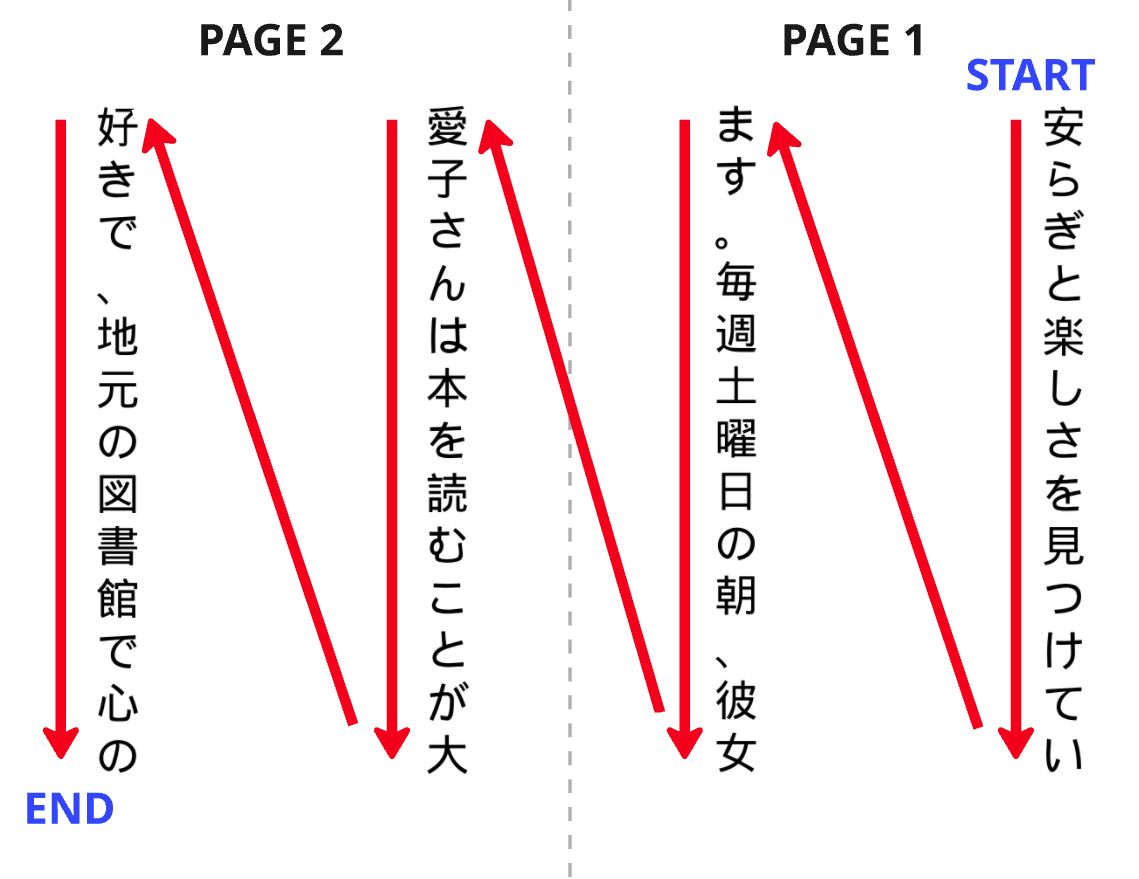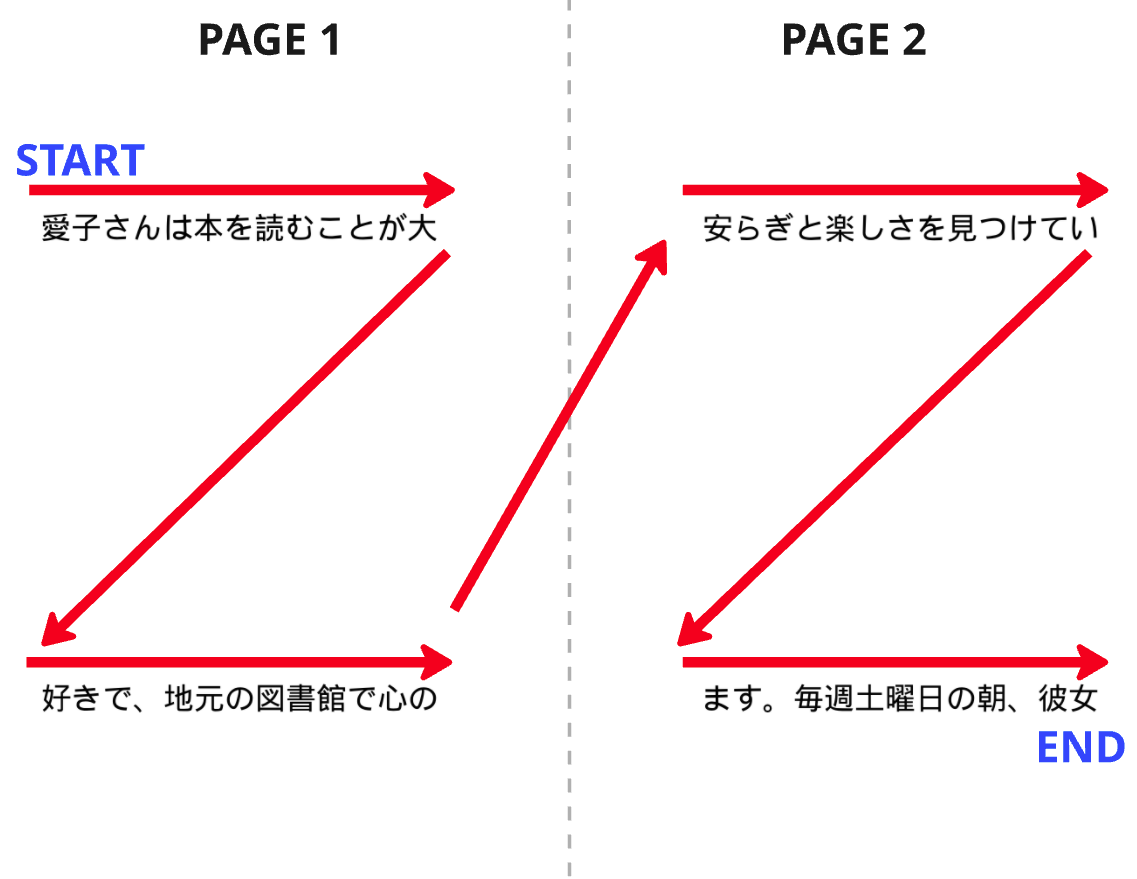Writing Systems Explained - Additional Information (Lesson 2)
Japanese is traditionally written in a format called tategaki (vertical writing), which originates from Chinese. Tategaki is commonly used in Japanese novels, newspapers, magazines, and manga. See the diagram below for an example:

Japanese can also be written in a format called yokogaki (horizontal writing) which is used often in websites, e-mails, texting, and scientific writing. This format is similar to the one used when writing English. See the diagram below for an example:

Furthermore, Japanese does not use spaces between words. Instead, readers rely on context to determine word boundaries.
Finally, Japanese also uses its own set of punctuation marks. See the table below for more details:
Japanese vs. English Punctuation
| Punctuation | Japanese Form | English Form | Notes |
|---|---|---|---|
| Comma | 、 | , | Full-width in Japanese; used similarly but with slight stylistic differences. |
| Period | 。 | . | Full-width; marks the end of a sentence. |
| Quotation Marks | 「 」 | " " | Used for direct speech, book titles, or emphasis. |
| Parentheses | () | () | Full-width required in Japanese; same usage as English. |
| Question Mark | ? | ? | Full-width; sometimes omitted in formal writing. |
| Exclamation Mark | ! | ! | Full-width; used similarly to English. |